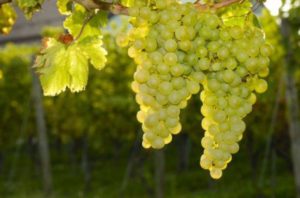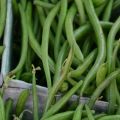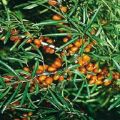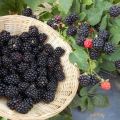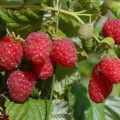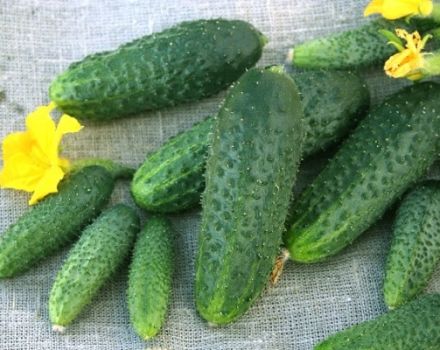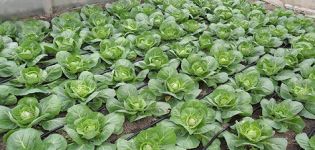Description and characteristics of the Sangiovese grape variety, cultivation and care
Dark blue, almost anthracite black, Sangiovese is considered to be a grape variety with origins from the beginning of time. Its name sounds like "divine blood". An excellent wine is obtained from the berries, it is popular both at home, in Italy, and in other countries - the USA, Latin America, Western Europe. The drink goes well with classic Italian pasta.
Origin story
There is a veil of mystery around the origins of the variety. There is no reliable information, but a couple of hypotheses exist. For example, it has been established that the species is related to the Tuscan Ciliegiolo and Calabrese di Montenuovo. Wine from Sangiovese is mentioned in the literature, they knew and knew how to prepare it for a long time, during the time of Rome, and maybe even earlier - under the Etruscans.
But winegrowers are more interested in the taste of the berry, the peculiarities of its cultivation, and let historians and archaeologists be engaged in research on the origin of the variety.
Varieties of varieties
Varieties or other variety names are:
- Brunello;
- Nielluccio.
Under the first name he is "known" in Tuscany, under the second - in Corsica. The look serves as the basis for the world famous drinks Chianti and Brunello de Montalcino. Until the middle of the 19th century, only Sangiovese was used for dry red Chianti, later the recipe was changed by reducing the proportion of the main component to 70%, adding Canaiolo and Malvasia.
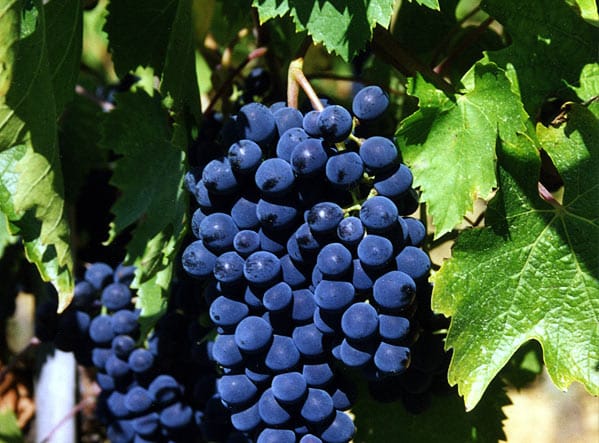
Cultivation regions
The variety is grown in its homeland, under the generous sun of the Mediterranean, as well as in other countries. 75% of the total volume of Sangiovese is harvested in the Tuscany region, about 10% - in the north of the country. Grapes grow in the USA (California), Argentina, Mexico and Australia.
In this case, we are talking about new places for cultivation, the "real" Sangiovese is still growing in Italy, from which the wine of the same name and blends for world famous drinks are prepared.
In addition to the original variety, there are its counterparts. Two of them stand out:
- Big or fat Sangiovese Grosso.
- Little Sangiovese Piccolo.
The first is a priori considered to be of higher quality and tastier; Brunello di Montalcino and Nobile di Montepulciano wines are made from it. Other names by which these grape varieties are referred to are Sangiovese Forte, Inganna Cane (large), Cordisco, Morellino, Sangioveto, Sanvicetro, Uva Tosca and Primutico (small).

External characteristics of the species
When describing the variety, they always focus on the color and shape of the berries - they are saturated dark blue, almost coal-black, shade, sweet, with a pleasant sourness. There are variations between blue and purple. The shape of the fruit is regular, round, they are "packed" in clusters of medium size, with characteristic pterygoid branches.
Brush with a pronounced tendency to a cone, less often slightly cylindrical. Leaves with 3 (5) petals, often incised, light green with prominent veins and a rounded notch at the base.
Bush and shoots
The grapes are vigorous, albeit a little capricious. The bush is of medium height; stepchildren develop sparsely on the stem. Size, color and ripening times vary from variety to variety. Generally, it is considered a late variety, growing well on calcified soils, with satisfactory resistance to disease and cold climates.
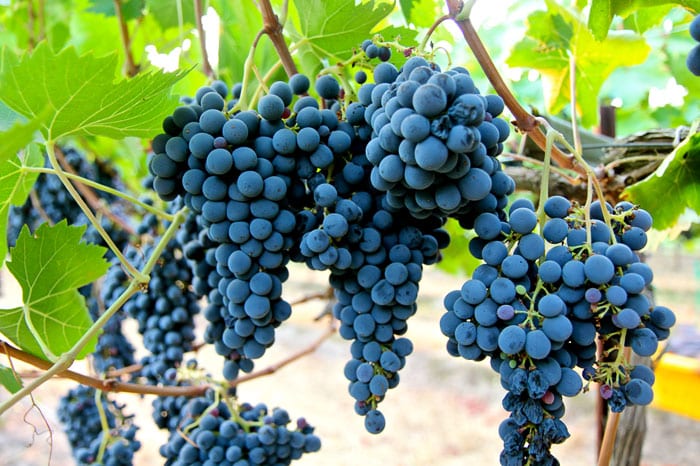
Leaves and fruits
The leaf on Sangiovese is of the usual "grape" shape, only heavily incised. There are 3- and 5-lobed specimens with a rounded notch at the attachment point of the cutting. Fruits are spherical (less often oblong), color - from pinkish to dark blue and purple. The taste is fruity, sometimes slightly sour, moderately sweet. Connoisseurs find strawberry or cherry tones in it.
How and when to plant a vine
At home, in Italy, it is customary to plant and grow grapes under certain conditions - at around 250-350 meters above sea level, in a sunny, well-lit place. The most favorable soil is calcined, not clayey and not dry (sandy). Enthusiasts are trying to grow Sangiovese in the south of Russia, in Ukraine and even in the Moscow region.

Since the variety is classified as late (according to other sources - medium-late), there is a high probability of successful completion of the attempt. In Italy, with its mild climate, the cultivar already blooms in mid-April, so it would be reasonable to plant it in early spring, after warm weather is established.
The Sangiovese seedling is not so easy to find - enthusiasts are engaged in cultivating the variety in the CIS, but it is quite possible to find material for your vineyard. The heat has a detrimental effect on the bush, it is sensitive to temperature changes and soil composition. Therefore, you need to choose a landing site taking into account these preferences of the southern guest.
What is needed for growing
To grow Sangiovese in the conditions of Russia, you need knowledge, experience and patience: southern varieties are capricious, whimsical, do not begin to bear fruit immediately, are sensitive to light and care. Particular attention is paid to the choice of the landing site: southern, not shaded hillsides or free spaces, the soil is not sandy or clayey in composition, with good drainage.

Sangiovese loves alkaline soil, which means it can be fertilized with dolomite or chalk before planting. The seedling is chosen healthy, without signs of disease and pest damage. After planting, the soil is watered and mulched.
Regular watering
The masters of grape science claim that watering of the variety is carried out no more than 2 times a year. But this rule works in the natural conditions of the Apennine Peninsula. When grown outside Italy, Sangiovese will require different care - somewhere more water, somewhere less. If you organize drip irrigation, when liquid and fertilizers flow directly to the root, then the problem will be resolved by itself.
Infection and insect treatment
Sangiovese is resistant to the main pathogens of garden diseases such as mildew, gray mold and powdery mildew. Prevention will not hurt, so experienced growers carry out prevention by treating the bushes with chemicals that inhibit chlorosis, rubella, and bacteriosis.
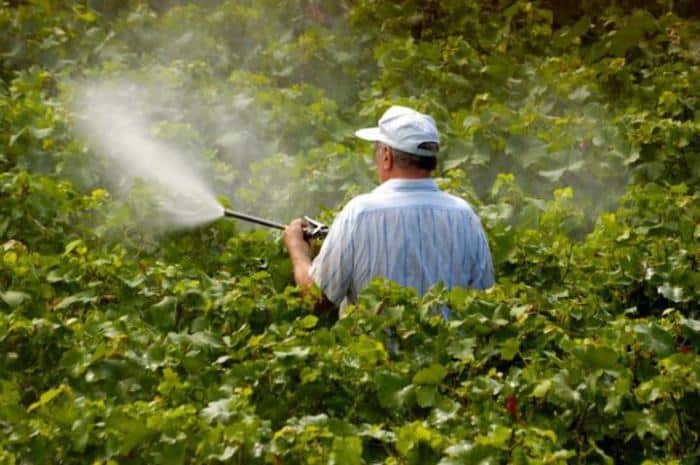
All grapes grown in Southern Europe suffer from powdery mildew.This should be taken into account when growing the variety and the appearance of the first signs of the disease on the mustache, foliage, shoots or inflorescences. Ridomil, Sandofan, Ditan M-45 are used more often than others. Complex treatment with chemicals, in combination with fertilizing with fertilizers, especially nitrogenous and phosphate fertilizers, give a good effect. Nets are used to protect against flying insects (wasps) and birds willingly eating berries.
Shaping and pinching
When forming a bush, pruning, removal of non-viable shoots, brushes is used. Pinching is used to accelerate the ripening of the berries, to push the vine towards this. It is performed simply - the top of the green shoot is cut off, after which all the juices go to the development of the bunches.
Garter
All grape varieties need a garter, otherwise, under the weight of ripening berries, the shoots and even the vine itself will break. To do this, immediately after planting, a trellis, a rack with several crossbars are dug in near the bush, or, in case of mass planting, rows of wire are pulled.

Seasonal fertilization
Top dressing is applied in early spring (as soon as it gets warm), before flowering, before berries ripen and before preparing for winter. There is no universal advice regarding the choice of the type of fertilizer: grapes need potassium, phosphorus and nitrogen, as well as trace elements, without them it cannot grow normally. You should act according to the situation. Sometimes organic matter (manure) is preferable to ready-made mineral mixtures.
In addition to root feeding, foliar is used - spraying with an aqueous solution of the entire bush.
Reproduction methods
These are seedlings and cuttings - what you can get. Since the variety is not very common, there is no need to choose. And then they act in proportion to the situation: they try to create optimal conditions for the future bush, provide them with useful substances, and protect them from pests and diseases.
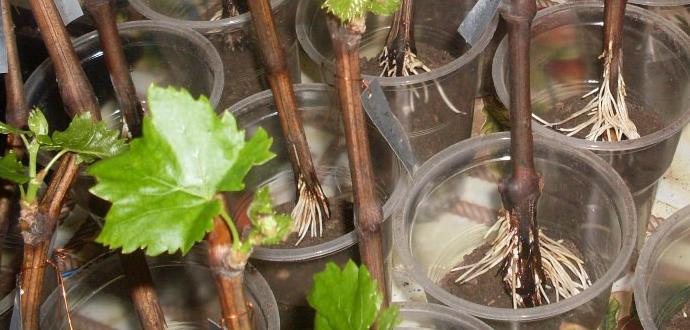
When a young vine begins to bear fruit
This is where opinions differ. Some sources claim that it is useless to wait for the harvest before 4-5 years from Sangiovese. It all depends on the conditions of its cultivation: in a warm, on fertile soil, having the necessary supply of minerals, the berry will tie and ripen faster. Moreover, the natural conditions for growing the variety "greenhouse" are mild winters, long sunny days, constant humidity. You should try to provide it with something similar in the Central Russia.
Ripening and harvesting
The grapes belong to late, in extreme cases - medium-ripening varieties. This means that the berry will be juiced 125-135 days after bud setting. It is almost impossible to speed up the process, unless you grow Sangiovese in a greenhouse and use top dressing.
In a real situation, this period may be even longer, since the southern variety is adapted to a certain combination of humidity, light, and air temperature.
Where are the berries of this variety used
Sangiovese is used as a raw material for the dry red wine of the same name, which is very popular in Italy and the world, as well as for numerous blends. The most famous Chianti, which carries the basis of the variety's bouquet - sweet, slightly sour, with a fruity or slightly "smoky" shade, taste of a wine berry, the real blood of Jupiter.
